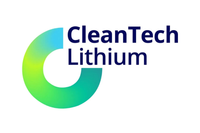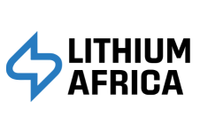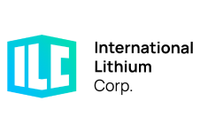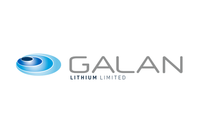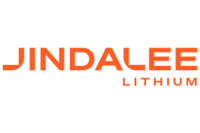What happened to lithium in Q2 2020? Our lithium market update outlines key developments and explores what could happen moving forward.
Click here to read the latest lithium market update.
The coronavirus pandemic has changed the outlook for most commodities, with lithium being no exception.
Despite the volatility that the spread of the virus has added to an already challenged market, most analysts believe lithium demand is still poised to surge in the long term on the back of the probably delayed but not denied energy revolution.
How did the metal perform in the second quarter of 2020, and what’s ahead for lithium in the near term? Read on for an overview of the main news that impacted the lithium market in Q2, plus a look at what investors should watch out for the rest of the year.
Lithium market update: Price performance
The first half of 2020 was full of uncertainty on the back of the coronavirus pandemic, with prices for lithium remaining at low levels.
Andrew Miller of Benchmark Mineral Intelligence said the disease has created a prolonged low price environment at a time when the backlog in supply was expected to reduce.
The expert said prices continued to edge downward in Q2, and it is likely the space will see continued convergence at lower price levels throughout the rest of the year.
“The slowdown in demand through H1 meant that excess supplies continued; however, there remains a premium on battery-grade pricing due to more restricted availability,” Miller told INN. “Although consumers are pushing for lower prices, there is a realization that prices cannot fall much further, and that current price levels won’t encourage investment at the rate required to meet future demand growth.”
For Fastmarkets, lithium prices performed as expected in Q2 this year. Battery-grade carbonate ended up averaging 42,942 yuan per tonne; while carbonate prices for China, Japan, Korea finished the quarter averaging US$7.87 per kilogram.
“Overall we think a base is now forming and prices may drift a little lower, but generally flatten out,” William Adams of Fastmarkets told INN. “There is, however, considerable stock along the supply chain and idle production capacity, so prices are likely to only get a little lift off the lows and then be capped until demand has climbed to absorb more of the inventory and the idle capacity.”
Roskill was also expecting prices to remain flat or in decline for an extended period of time.
“That being said, significant price disparity does remain between buying regions, most clearly reflective in China versus ex-China markets for both hydroxide and carbonate products,” Roskill’s Jake Fraser told INN.
Buying schedules and order placements from cathode customers have transitioned from months or years in advance down to weeks in some cases, he added. “(That is) a pattern perhaps likely to continue throughout 2020 into early 2021.”
Roskill expects a sustained marketwide uptick in pricing sometime in H1 2022.
According to CRU data, Asian import prices of both carbonate and hydroxide have continued their steady decline in Q2. Weight-average LiOH import prices in Japan and South Korea were around US$12,250 per tonne in Q2, down from US$13,400 per tonne in Q1.
“Despite this price decline, our analysis suggests that conversion margins remain strong and we can continue to expect steady price declines in the second half of 2020 as prices are renegotiated at lower levels,” CRU’s George Heppel told INN. “We do not expect a significant price pick-up until the early-2020s, and prices similar to what was seen in 2016-2017 are extremely unlikely in the mid-term.”
For Fastmarkets’ Adams, lithium prices are currently at unsustainable levels.
“We expect prices will start to level off … but as we all know, commodity prices can stay below marginal costs for a long time until either demand recovers or producers make cutbacks,” he said. “We expect to see a bit of both — more producer restraint, indeed we saw that with Albemarle (NYSE:ALB) reducing some of its production, and a pickup in demand.”
Miller pointed out the low price environment and the wider macroeconomic uncertainty are adding another obstacle to financing new projects
“We’ve already seen almost all of the majors cut back expansion plans since the start of the year, and current price levels won’t incentivize a rush to bring these new operations online, or sustain the development of other projects.”
Lithium market update: Supply and demand
When looking at demand dynamics, most analysts agree that it is highly unlikely that demand for lithium will return to pre-COVID-19 levels in 2020.
“However, lithium chemical demand from end-use sectors is still expected to increase year-on-year to around 280,000 tonnes lithium carbonate equivalent,” Fraser said. “(That is) owing to larger battery packs being installed in electric vehicle (EV) models and the EV sector itself forecast to see 10 percent year-on-year growth in sales.”
Adams is also expecting demand to be lower than in 2019, but it could rebound sharply in 2021.
“Especially as a lot of the government measures to combat the fallout from COVID-19 are aimed at EVs, and green projects that will boost demand for lithium-ion batteries for use in EVs and energy storage systems,” he said. “We expect the rest of 2020 will see demand rebound.”
Commenting on what he expects to see in terms of demand this year, Miller said demand from industrial sectors is forecast to be down.
“While production of cathode materials will be slower, lithium purchasing is likely to increase towards the end of the year as consumers begin to prepare for 2021 battery production,” he added.
Demand is expected to decrease marginally in 2020, but given recent stimulus announcements and the continued push towards electrification from major OEMs, Benchmark Mineral Intelligence expects that by 2022 battery demand levels will return to the levels the firm was projecting in Q4 2019.
Similarly, CRU’s Heppel said industrial applications, which typically make up around a third of total lithium demand, have taken a big hit as a result of the pandemic. But on the other side of the equation, demand from the battery sector has been extremely strong in recent months.
In the EV sector, the surprise has been Europe, where sales were stronger than many expected in the first half of 2020 despite the uncertainty brought by COVID-19.
Heppel explained that the ongoing “green recovery” narrative and the introduction of very generous subsidies in Western Europe has resulted in an astonishing increase in EV sales this year which is contributing to a significant increase in demand for lithium battery chemicals.
But for Roskill, expectations should remain tempered moving forward into Q3 and Q4 of this year.
“This comes in anticipation of OEMs clearing pre-shutdown order backlogs and the four to five month demand lag from OEMs to lithium suppliers beginning to kick in,” Fraser said. “It is not until this stage that clarity surrounding the strength of demand recovery following COVID-19 impacts in Q1 will become apparent.”
Another important area of demand growth for CRU is in the 5G portable electronics sector, especially in China, which has seen substantial growth post-lockdown.
“Despite the ongoing pandemic, we currently expect total lithium demand to grow by around 9 percent in 2020,” Heppel said.
Looking at the supply side, Adams explained that physical supply has not been directly affected that much. Some producers have reacted to weak demand and prices by reducing their production, while others are building their inventory.
“What has been affected is that a lot of development/expansion work has been put on hold and the low price environment has made it more difficult for some juniors to raise funds, but not all,” he said, mentioning Infinity Lithium (ASX:INF) as an example.
“These delays means that there is a greater risk of supply shortages in the period after 2024/2025 and during the second half of the decade.”
Lithium supply and future supply plans have also been impacted by the coronavirus pandemic.
“From the upstream perspective, reduced production rates and campaign mining have become a common theme amongst spodumene producers,” Fraser said. “This has primarily been motivated by a need to manage production costs amidst a backdrop of low concentrate prices.”
But for the analyst there is definitely still room for optimism, as Q2 of this year delivered some positive news on the project finance and offtake front, mentioning Sigma Lithium (TSXV:SGMA,OTCQB:SGMLF) and US Magnesium as examples.
Lithium market update: Supply chain build out debate continues
When asked about whether the deglobalization of lithium supply chains is good news for the industry, Adams said in general the answer is yes. “It will help the lithium space become greener — less CO2 emissions in transporting lithium back and forth around the world and more secure as there will be less concentration and risk of geopolitical disruptions,” he said.
This may also be good news for juniors that may be small and in higher-cost regions, and therefore may have struggled to raise financing if it was not for their proximity to end-use demand, he added.
Miller said deglobalizing supply chains is a necessity for a market that’s gearing up from 300,000 tonnes per year to over 1 million tonnes per year in the next five years.
“The increasingly diversified nature of downstream efforts outside of China and Asia means upstream efforts will have to follow,” he explained.
“At a processing level, this will see more plants located near emerging markets, but from a lithium raw material perspective it is also accelerating the need for new assets to be developed that can insulate downstream users from the risks associated with being wholly dependent on one or two regions.”
Roskill’s Fraser also gave his thoughts on the localization of supply chains, a key trend in the last few months that has been accelerated by COVID-19.
“I think it’s important to address the elephant in the room, being China’s refining capabilities, and the difficulty in reducing overall industry reliance in the short term,” Fraser said.
He added that there is a growing push for “homegrown” industry development, as is being witnessed in Europe and North America, which does provide an exciting prospect for local juniors developing integrated mines and/or reprocessing facilities.
“But this will require time, capital markets to open their doors and importantly the development of technical expertise locally in order to deliver on the stringent quality standards of cathode and cell makers,” Fraser said.
Lithium market update: What’s ahead?
When asked about what’s ahead for the lithium market, Miller said investors should continue to keep an eye on the timeline for ramp-up and qualification of new material into western OEM supply chains.
“With the next phase of battery demand set to stem from European and North American markets, the partnerships and investments that end users have along the supply chain will say a lot about their ability to deliver,” he said.
For his part, Adams said some catalysts to watch out for during the rest of the year are if inventories are falling, if there are more production cutbacks and if EV demand in China is recovering from the slowdown that started in July 2019.
Heppel suggested investors to pay attention to the subsidy schemes in Europe — and specifically, how long they will last for.
“The generous subsidies seen in various European countries has resulted in a massive increase in EV sales, but these subsidies won’t last forever,” he said. “If they are removed too early, before EVs are affordable like-for-like against traditional ICE vehicles, then we could see EV sales plateau in Europe, similar to what we have seen in China in recent years.”
Don’t forget to follow us @INN_Resource for real-time news updates!
Securities Disclosure: I, Priscila Barrera, hold no direct investment interest in any company mentioned in this article.
Editorial Disclosure: The Investing News Network does not guarantee the accuracy or thoroughness of the information reported in the interviews it conducts. The opinions expressed in these interviews do not reflect the opinions of the Investing News Network and do not constitute investment advice. All readers are encouraged to perform their own due diligence.
